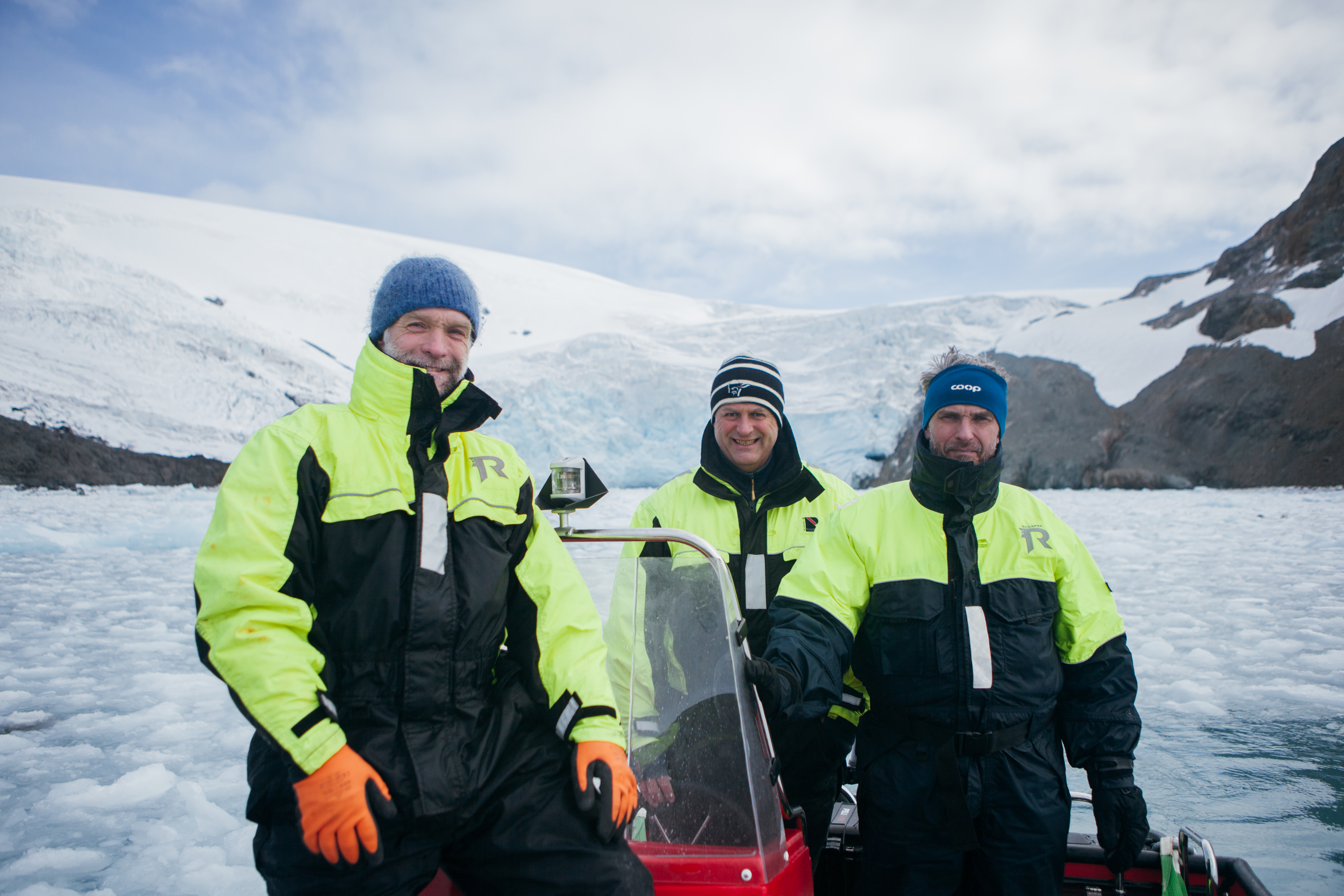Fin whales making strong comeback in the Southern Ocean
Fin whale photographed by drone during a cruise in 2023.
Photo: Martin Biuw / Institute of Marine research and Julian Dale / Duke University, Marine Robotics and Remote Sensing LabPublished: 30.04.2024
For a long time, there has been great uncertainty about whether the fin whale has managed to recover after the industrial whaling in the Southern Ocean in the first half of the 20th century.
Now marine scientists can confirm the "comeback" of fin whales in a key region of the Southern Ocean. Whale counts that have recently been presented in a scientific article show a record number of fin whales in the Scotia Sea in the Southwest Atlantic sector of the Southern Ocean.
– It is simply sensational. The results show over 50,000 fin whales in the Scotia Sea alone. That is more than three times higher than previously estimated for the entire Southern Ocean, says marine scientist Martin Biuw.
Whale counts carried out in smaller areas in the same region in the last decade have also shown a higher density of fin whales than expected.
– Our findings show that this applies to the entire Scotia Sea, and not just within small "hotspots", says Biuw.
Extensive whaling
Baleen whales are one of the two main groups of whales we have, and consist of species such as humpback whales, minke whales, fin whales and blue whales - the largest animal on earth.
During industrial whaling, large numbers of baleen whales were caught in the vast ocean areas surrounding Antarctica, which brought many species close to extinction before the harvests ceased in the 1960s.
– Fin whales were by far the most heavily exploited species, and more than 700,000 animals were taken during the period of industrial whaling, says Biuw.
While the extensive whaling also took a toll on the humpback whale population, several reports in the last decade show that several humpback whale populations in the Southern Ocean have increased sharply, which has also been confirmed by sightings collected during the IMR-led krill survey in the Antarctic in 2019.
Read more: Strong "comeback" for humpback whales in Antarctica

Krill on the menu
The Southern Ocean is a very important feeding area for whales in the summer. Here, large whales gorge on enormous quantities of krill, and this makes the krill survey a good platform for whale surveys.
– As expected, large numbers of whales were observed on this survey, especially within known krill fishing areas. The species we encountered most frequently was fin whales, often in huge groups that grazed on large schools of krill, says Biuw, who himself took part on one of the survey vessels in 2019.
Marine scientists believe that the results from the whale survey challenge previous reports which claim that the krill biomass has decreased sharply and has contracted south, as a result of rising sea temperatures.
– Our findings also indicate that fin whales consume around 20 times more krill than was harvested by the international commercial krill fishing fleet in the same area in 2019, says Biuw.
No decline for krill
Cruise leader for the krill survey in 2019, Bjørn Krafft, is responsible for IMR's monitoring of krill in the Southern Ocean. He believes that the large increase in the population of fin whales has not had a negative effect on krill biomass in the same area.
– It is very positive to see such a clear increase in the population of such an important krill predator as the fin whale. One can assume that an increase of this magnitude in a short time would affect the biomass of krill, but the results from large-scale krill surveys in 2000 and 2019 have not shown any long-term trend. The biomass of krill is the same now as in the year 2000, says Krafft, referring to a research article published a few years ago.
Smaller surveys carried out regularly around the South Orkney Islands show that the amount of krill can vary somewhat from year to year, but without showing any clear upward or downward trend in krill biomass.
This is how we count whales
In order to arrive at the whale numbers, researchers have obviously not counted all 50,000 whales. They use a method called line transect distance sampling.
– When on a survey, we follow pre-planned lines. Along these so-called transects, we observe whales, note down the species and distance to the vessel, as well as the angle between the whale and the course line. We often see a group of whales, and then we also record the number of whales in the group, explains marine scientist Ulf Lindstrøm, who also took part in the 2019 survey.
Together with other factors such as weather conditions, wind and visibility, these numbers are entered into a statistical model that results in a density estimate. That is, how many of the whales there are likely to be within a given area, such as one square kilometre. This number is then extrapolated to abundance for the entire area being surveyed.
– There is of course some uncertainty in these calculations, so we also include an uncertainty margin around our estimates. But even if we take this uncertainty into account, the population size for fin whales is many times higher than previously thought, concludes Biuw.
The fin whale abundance estimate for the Scotia Sea was presented last week at the meeting of the Scientific Committee of the International Whaling Commission in Bled, Slovenia.
Referance:
Biuw, M., Lindstrøm, U., Jackson, J.A. et al. Estimated summer abundance and krill consumption of fin whales throughout the Scotia Sea during the 2018/2019 summer season. Sci Rep 14, 7493 (2024). https://doi.org/10.1038/s41598-024-57378-3
